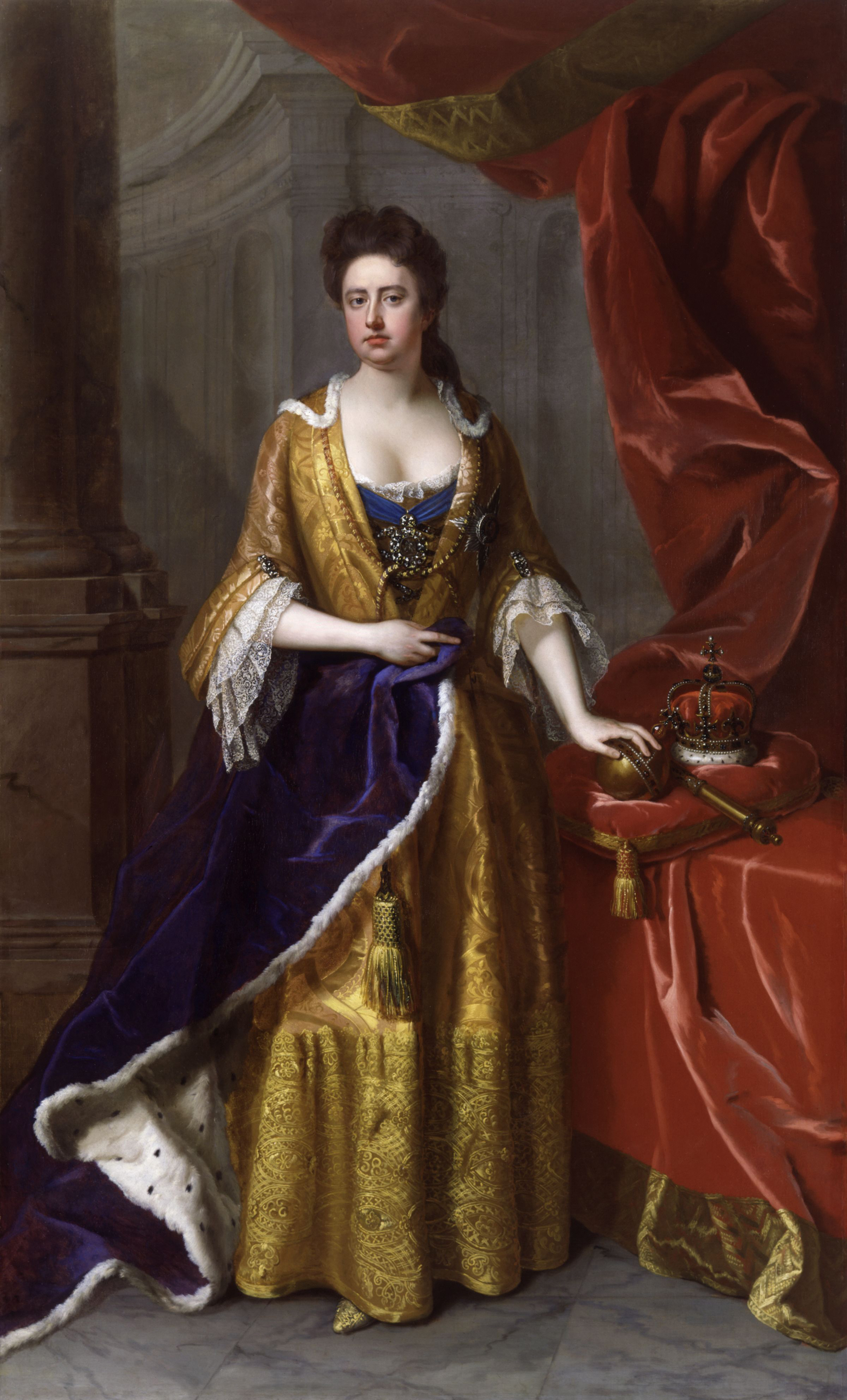
Anne, Queen of Great Britain
Anne (6 February 1665 – 1 August 1714)[a] was Queen of Great Britain and Ireland following the ratification of the Acts of Union on 1 May 1707, which merged the kingdoms of Scotland and England. Before this, she was Queen of England, Scotland, and Ireland from 8 March 1702.
For other queens with a similar name, see Queen Anne of England.Anne
1 May 1707 – 1 August 1714
8 March 1702 – 1 May 1707
23 April 1702
6 February 1665
St James's Palace, Westminster, England
1 August 1714 (aged 49)
Kensington Palace, London, England
24 August 1714
Anne was born during the reign of her uncle King Charles II. Her father was Charles's younger brother and heir presumptive, James, whose suspected Roman Catholicism was unpopular in England. On Charles's instructions, Anne and her elder sister Mary were raised as Anglicans. Mary married their Dutch Protestant cousin, William III of Orange, in 1677, and Anne married the Lutheran Prince George of Denmark in 1683. On Charles's death in 1685, James succeeded to the throne, but just three years later he was deposed in the Glorious Revolution of 1688. Mary and William became joint monarchs. Although the sisters had been close, disagreements over Anne's finances, status, and choice of acquaintances arose shortly after Mary's accession and they became estranged. William and Mary had no children. After Mary's death in 1694, William reigned alone until his own death in 1702, when Anne succeeded him.
During her reign, Anne favoured moderate Tory politicians, who were more likely to share her Anglican religious views than their opponents, the Whigs. The Whigs grew more powerful during the course of the War of the Spanish Succession, until 1710 when Anne dismissed many of them from office. Her close friendship with Sarah Churchill, Duchess of Marlborough, turned sour as the result of political differences. The Duchess took revenge with an unflattering description of the Queen in her memoirs, which was widely accepted by historians until Anne was reassessed in the late 20th century.
Anne was plagued by poor health throughout her life, and from her thirties she grew increasingly ill and obese. Despite 17 pregnancies, she died without surviving issue and was the last monarch of the House of Stuart. Under the Act of Settlement 1701, which excluded all Catholics, she was succeeded by her second cousin George I of the House of Hanover.
